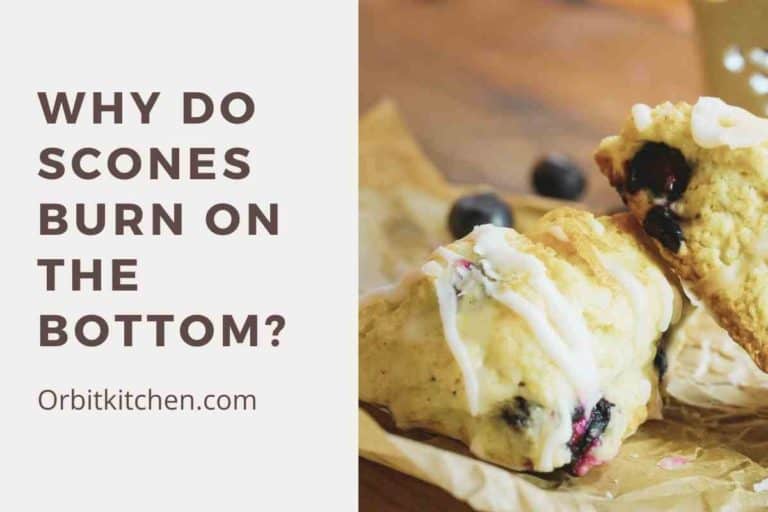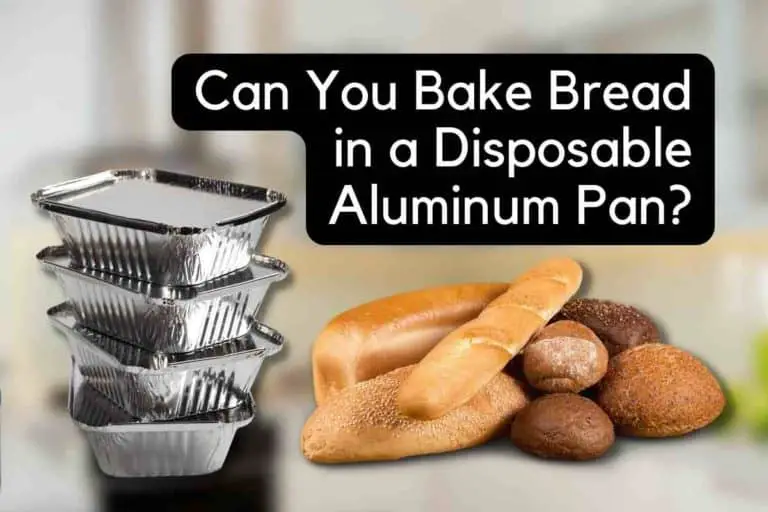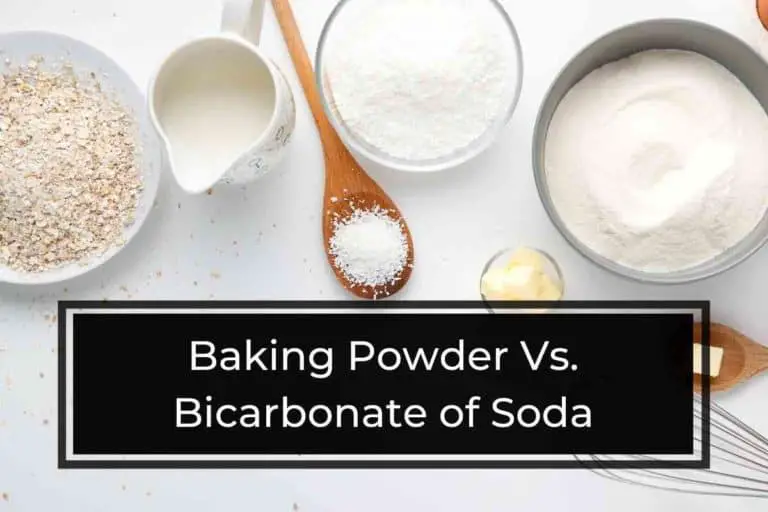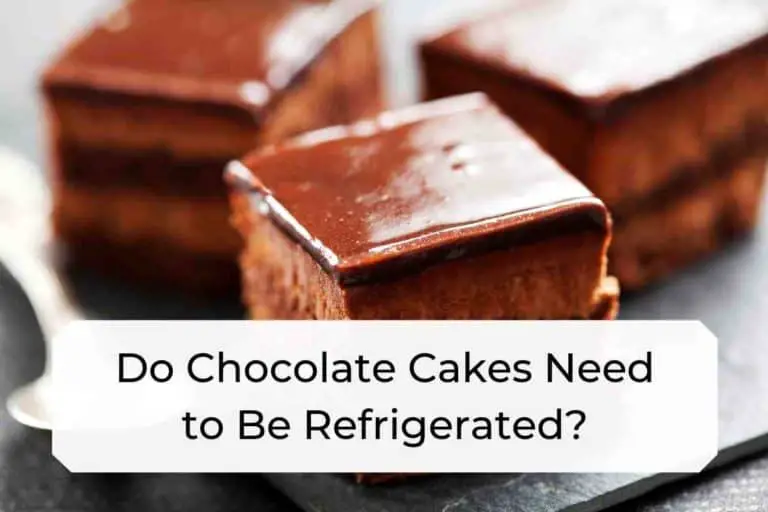Why Do Cakes Rise in the Middle and Crack?
While waiting for my cake to be ready, I wondered why cakes often rise in the middle and crack. It’s very frustrating when a cake cracks in the middle; this means it’s either not baked or underbaked, so I did some research to figure out why that happens.
Why do cakes rise in the middle and crack?
Cakes usually rise in the middle and crack when the oven is too hot due to the high temperature. So, the top crust forms before the cake have fully risen, while the middle of the cake rises and cracks. By regulating the oven’s temperature during preheating, you can avoid this problem.
If you’re thinking of avoiding cake center dome and cracks, you should know about their causes and effective methods to prevent your cake from rising and cracking in the middle by correcting the oven temperature.
In this guide, we’ll look at why cakes rise in the middle and crack and how to prevent this.
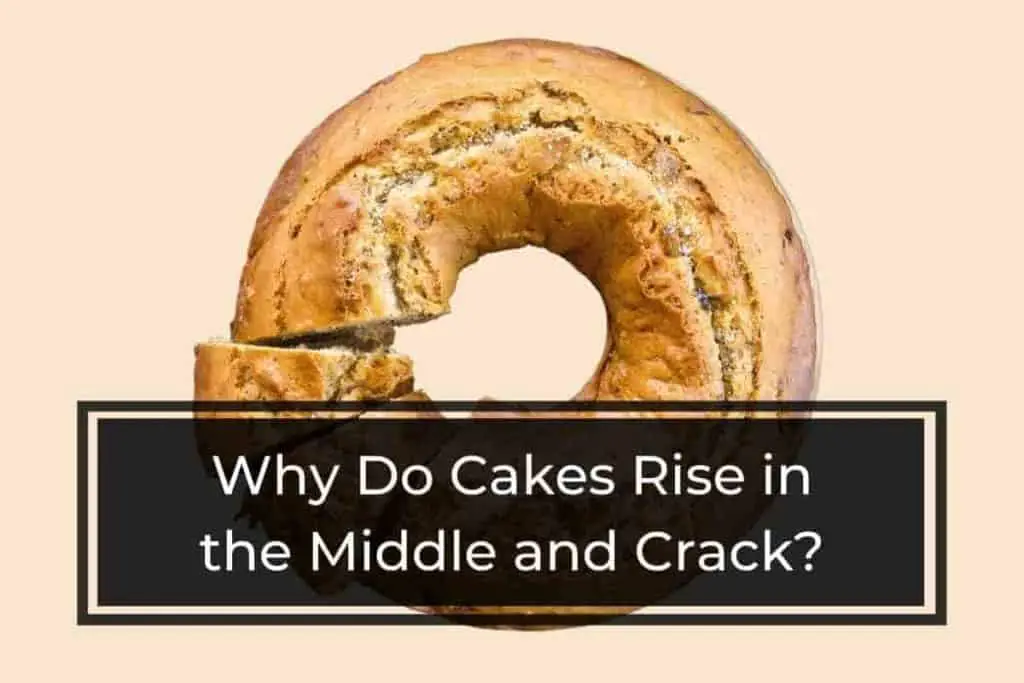
If you are interested in buying the best bakeware products and accessories for the kitchen, be sure to visit my Recommended Products Page (click to see my page), Which includes all of my top picks by category.
Why Does My Cake Rise in the Middle?
It’s great fun to bake, but it can be frustrating when things don’t turn out as expected. It’s pretty standard for most cakes to rise slightly, but if a cake ‘domes’ in the center and cracks significantly, it could be due to the oven’s high temperature.
When the middle or top crust of the cake sets up earlier than the rest, it will cause the middle of the cake to rise. This happens when the oven temperature is too hot and not checked before placing the cake inside it.
Cakes always rise in the middle and crack due to the oven’s high temperature. If the top of your cake hardens before it finishes rising, the center will burst through the crust while baking, which will cause a cracking effect and could make your cake dome.
So, check your oven’s temperature to ensure it’s correct so your cake won’t spoil. The edges of a cake bake faster than the center, which can cause middle rising (dome-shaped cakes), cracks, and dry edges.
To prevent this from happening, lower the heat of your oven by 25 degrees Fahrenheit before baking. Also, consider using a light-colored pan — it absorbs less heat than a dark pan, reducing the chance of over-browning.
What Makes Cake Rise Higher?
A leavening ingredient, such as baking powder or baking soda, is required in a cake to make it rise higher. These are what make the bubbles that allow the cake to rise. If you choose self-raising flour, it already contains a leavening agent. Make sure your butter is at room temperature before creaming the butter and sugar together.
Why Does My Cake Not Rise?
Cakes that don’t rise properly or have a surface covered in tiny holes are frequently the result of failing to get the cake into the oven quickly enough. This is a common mistake when you forget to turn on the oven before you begin mixing or get distracted by something else mid-way through.
Can You Keep a Cake from Rising in the Middle?
You can keep a cake from rising in the middle by preheating the oven to 325°F for baking. This lower temperature prevents the cake from rising rapidly and cracking after the temperature starts to fall.
After baking cakes for years, I’ve found that the best temperature is 325 F. To prevent your cake from rising too quickly and then falling in the center, I recommend using a lower temperature and checking for doneness about 5 minutes before the recipe states.
Also, check our guide on why is my sponge cake sticky.
Why Do Cakes Rise and Then Sink?
Cakes that rise too high and then fall result from too much leavening agent like baking soda or powder. Minimize this by mixing pointedly and gently with no excess air in the batter. Avoid opening the oven door early, which can also have a leavening effect.
Flour by itself only provides structure. Baking powder and baking soda are often used to leaven cake batters and quick bread. The amount of each leavening agent is carefully balanced for proper height and texture.
Too many leavening agents like baking soda or powder can cause a cake to rise too high too quickly. Before the cake bakes through in the center, the gas from the leavening chemicals builds up and escapes. This causes the center of the cake to collapse, causing the layers to sink in the middle.
How Do You Keep a Cake from Rising in the Middle?
You can keep your cake from rising in the middle by different methods. There are many myths surrounding baking a cake, but I will mention three essential and valuable tips to make even rises of your cake.
Set Oven Temperature for Even Rises:
The cake diverges at the center, leaving a hump. To avoid this unfortunate rise, heat the oven to 325 degrees Fahrenheit. Put each cake pan on an oven rack positioned in the lower third or even the bottom of your oven. Most cake mixes and recipes recommend 350 F, but 325 F is preferable since it better ensures an even rise.
Positioning a Cake for Even Rises:
To avoid middle rise and bake a perfect cake, you should position your batter 18-20cms away from any heat source. This would ensure that the center of your cake will rise appropriately in proportion to its edges.
Use Foil for Even Rises:
Middle rises are to avoid when baking cakes. If a cake rises unevenly, it will settle into the shape of the tin. For example, if you have an 18 cm round tin, your cake will likely rise to 20 cm, and the lid bulges out a bit in the middle. The solution to this is easy – make an aluminum foil tent over the top of your cake. That will give it even and perfect rises!
Why Do Cakes Crack in the Middle and Top?
It would be best if you had a few things to get a cake to rise and turn out great every time. So pay attention, because here are three reasons why your cake cracks in the middle.
Temperature and Position of the Oven:
If your cake has cracks, it will not look so good. This is due to the oven being too hot. To avoid this, start checking your cake five minutes before the expected baking time.
If you have an uneven oven, it is probably baking hotter on one side than another. Try rotating your pan halfway through the expected baking time to even out the cooking temperature.
Imbalance of Liquid and Flour:
If your recipe doesn’t use the proper quantities of liquids and flour, an identical issue can arise. A stiff, doughy batter will crack as the cake bakes and rises due to its lack of flexibility. If the recipe calls for too much flour or too little liquid, this can happen.
Leavening:
The baking powder or baking soda may also contribute to your cake cracking. Your cake may rise too quickly if you use too much baking powder, cracking or spilling over the sides of the pan. If your cake contains acidic elements like buttermilk, the same thing can happen with baking soda.
How Can I Get My Cake to Rising Evenly?
Smack the pans against the counter a couple of times with the cake batter. Any air bubbles will be removed as a result of this. Place it in the oven to bake. The moisture from the towel assists the cake in baking more evenly, resulting in a constant rise and a cake with a flat top.
A few things can be as frustrating as a cake that doesn’t rise when baking a cake. I’ve always wondered why it’s so challenging to get all of the ingredients to rise evenly, but this is my best guess — an uneven rise occurs because of trapped air bubbles in the batter.
When Should You Level a Cake?
A completely cool cake is best for leveling; a warm and fragile cake will lose a pile of crumbs as it is sliced. It also depends on having the correct equipment for the job—a nine- or 10-inch serrated knife, not a pointless, uni-tasking cake cutter.
You can complicate the process of preparing a cake for slicing. And if the cake is only just cool to warm, the process will be even more so. It would be best to let it sit to help it hold its shape or end up with a flimsy and messily-cut cake.
How to Fix a Cracked Cake Top?
You just baked a delicious cake, and you’re about to decorate it when something terrible happens — the top of your cake is cracked! Don’t worry; I have the perfect solutions for you:
- Use the frosting procedure to hide the cracked cake top.
- Another edible cake ingredient that acts as an adhesive is buttercream. While using buttercream to repair your cracked cake, you can also use it to embellish your cake.
- Make a lovely icing with mascarpone, coffee, and icing sugar to mend your cracked cake.
- Another fantastic idea is to serve broken cake tops with ice cream.
- To disguise the cracked top of the cake, layer it with fruits.
Conclusion
Cakes are an essential part of baking. If you want to bake cakes without any problems, it is crucial to follow the instructions correctly. Several challenges might arise if directions are not followed correctly. The main challenges are the middle dome or rising of a cake and cracks in a cake.

